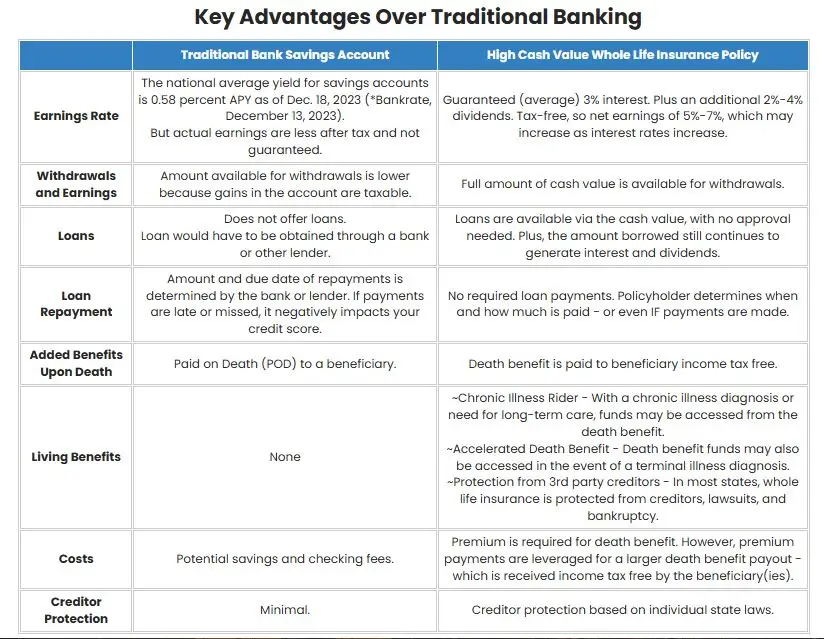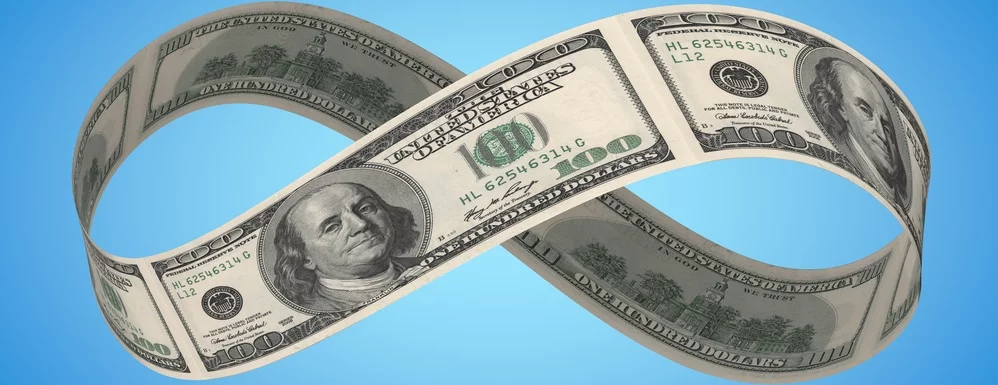All Categories
Featured
Table of Contents
Okay, to be reasonable you're really "banking with an insurance provider" as opposed to "financial on yourself", but that principle is not as very easy to market. Why the term "boundless" financial? The idea is to have your money functioning in numerous locations simultaneously, instead than in a solitary area. It's a bit like the concept of purchasing a house with cash money, after that borrowing versus your home and putting the cash to operate in one more financial investment.
Some individuals like to chat regarding the "rate of money", which generally indicates the exact same point. In truth, you are simply making best use of utilize, which functions, however, naturally, functions both ways. Frankly, all of these terms are rip-offs, as you will see listed below. Yet that does not imply there is nothing beneficial to this principle once you obtain past the advertising and marketing.
The entire life insurance policy industry is pestered by excessively costly insurance policy, massive payments, shady sales methods, reduced prices of return, and poorly informed customers and salespeople. If you want to "Bank on Yourself", you're going to have to wade right into this market and in fact acquire entire life insurance policy. There is no substitute.
The guarantees intrinsic in this item are vital to its feature. You can borrow versus the majority of sorts of money worth life insurance coverage, yet you should not "bank" with them. As you buy an entire life insurance plan to "bank" with, keep in mind that this is an entirely different section of your economic plan from the life insurance section.
Purchase a large fat term life insurance policy plan to do that. As you will see below, your "Infinite Financial" plan really is not mosting likely to dependably offer this important monetary function. One more trouble with the truth that IB/BOY/LEAP relies, at its core, on an entire life plan is that it can make acquiring a policy troublesome for most of those curious about doing so.
Royal Bank Infinite Visa Rewards
Unsafe pastimes such as SCUBA diving, rock climbing, sky diving, or flying also do not mix well with life insurance items. That may work out great, considering that the factor of the policy is not the fatality advantage, however remember that acquiring a policy on minor kids is extra costly than it must be since they are generally underwritten at a "conventional" price instead than a chosen one.

Many policies are structured to do one of 2 things. Many typically, plans are structured to make the most of the payment to the representative marketing it. Negative? Yes. It's the fact. The payment on an entire life insurance coverage policy is 50-110% of the first year's costs. In some cases policies are structured to make best use of the fatality benefit for the costs paid.
The rate of return on the plan is extremely important. One of the ideal methods to optimize that variable is to get as much cash money as feasible into the policy.
The ideal method to improve the price of return of a plan is to have a fairly small "base policy", and after that put more money into it with "paid-up additions". With more cash money in the policy, there is even more cash money worth left after the prices of the fatality advantage are paid.
A fringe benefit of a paid-up addition over a routine costs is that the compensation rate is reduced (like 3-4% rather than 50-110%) on paid-up enhancements than the base plan. The much less you pay in payment, the greater your price of return. The price of return on your cash worth is still mosting likely to be unfavorable for a while, like all money value insurance policy plans.
The majority of insurance policy companies just use "straight acknowledgment" financings. With a straight acknowledgment loan, if you obtain out $50K, the returns price used to the cash worth each year only applies to the $150K left in the policy.
Cibc Aerogold Visa Infinite Online Banking
With a non-direct recognition lending, the firm still pays the exact same reward, whether you have "borrowed the money out" (practically against) the policy or not. Crazy? That recognizes?
The firms do not have a source of magic complimentary cash, so what they provide in one area in the policy need to be extracted from another area. But if it is taken from a feature you care much less about and take into an attribute you care more about, that is a good idea for you.
There is another critical feature, typically called "wash car loans". While it is terrific to still have actually dividends paid on money you have taken out of the plan, you still have to pay passion on that particular finance. If the returns rate is 4% and the car loan is charging 8%, you're not specifically appearing ahead.
With a wash lending, your lending rate of interest is the exact same as the dividend rate on the policy. While you are paying 5% passion on the funding, that rate of interest is totally offset by the 5% dividend on the loan. So in that regard, it acts much like you withdrew the cash from a financial institution account.

5%-5% = 0%-0%. Same very same. Thus, you are now "banking on yourself." Without all three of these elements, this plan merely is not mosting likely to work extremely well for IB/BOY/LEAP. The largest problem with IB/BOY/LEAP is the people pushing it. Almost all of them stand to make money from you getting into this principle.
As a matter of fact, there are lots of insurance policy representatives talking about IB/BOY/LEAP as an attribute of entire life that are not really marketing policies with the required attributes to do it! The issue is that those who recognize the idea best have a large conflict of rate of interest and normally blow up the benefits of the idea (and the underlying policy).
Infinite Banking Reviews
You must contrast loaning versus your plan to taking out cash from your interest-bearing account. Return to the beginning. When you have nothing. No deposit. No cash in financial investments. No money in cash money worth life insurance policy. You are encountered with a choice. You can put the money in the bank, you can spend it, or you can get an IB/BOY/LEAP policy.
It expands as the account pays passion. You pay taxes on the interest every year. When it comes time to purchase the boat, you take out the cash and purchase the watercraft. You can conserve some more money and put it back in the financial account to begin to gain passion once again.
It grows for many years with capital gains, rewards, rental fees, and so on. A few of that earnings is strained as you accompany. When it comes time to get the boat, you offer the investment and pay tax obligations on your long term resources gains. You can save some more money and acquire some more financial investments.
The money value not utilized to pay for insurance policy and compensations expands over the years at the reward price without tax drag. It starts out with unfavorable returns, but hopefully by year 5 or so has recovered cost and is expanding at the dividend rate. When you most likely to acquire the watercraft, you obtain versus the policy tax-free.
Bank On Yourself Insurance Companies
As you pay it back, the cash you paid back begins growing again at the dividend price. Those all job pretty similarly and you can compare the after-tax rates of return. The fourth choice, however, works very in a different way. You do not save any cash nor purchase any type of type of financial investment for several years.
They run your credit history and give you a finance. You pay rate of interest on the obtained money to the financial institution up until the finance is paid off.
Table of Contents
Latest Posts
Infinite Income System
Being Your Own Bank
Bioshock Infinite 3rd Cipher Bank
More
Latest Posts
Infinite Income System
Being Your Own Bank
Bioshock Infinite 3rd Cipher Bank